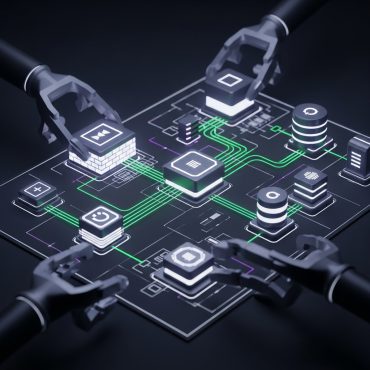What Are Integrated Architectures?
Integrated architectures refer to a unified IT infrastructure design in which computing, storage, and network components are centrally managed and operate cohesively as a single system. Unlike traditional siloed systems, integrated architectures consolidate servers, storage arrays, and software-defined resources into a tightly-coupled environment, improving efficiency, agility, and security.
This approach is increasingly adopted by modern enterprises to simplify data center operations, reduce latency, optimize performance, and enhance the resilience of mission-critical applications.
Use Cases
• All-Flash and Hybrid Data Storage Systems
• High-Performance Virtualization Platforms
• Backup and Disaster Recovery Infrastructures
• Data Center Consolidation Projects
• Distributed Application Hosting and Automation
Key Advantages
Centralized Infrastructure Management
By managing all core components from a single pane of glass, integrated systems reduce operational complexity and allow IT teams to maintain visibility and control across the environment.
Built-in Security Layers
Integrated platforms can incorporate network segmentation, identity verification, data encryption, and privileged access controls directly into the infrastructure. This unified security model enables coordinated and consistent threat defense.
Performance Optimization
All-Flash and hybrid storage solutions deliver significantly improved IOPS and throughput for demanding workloads. Integrated architectures ensure tight alignment between compute and storage layers, minimizing latency and accelerating data access.
Scalable and Flexible
As business demands grow, resources within an integrated environment can be scaled horizontally or vertically with ease. This ensures the infrastructure can adapt to dynamic workloads without disruption.
Security Considerations in Integrated Architectures
Logical Segmentation and Isolation
Resources are segmented logically to contain potential breaches. A compromised component is isolated, preventing lateral movement within the environment.
Integrated Firewalls and Logging
Inbound and outbound traffic is monitored through embedded security gateways. Centralized logging simplifies audit trails and regulatory compliance (e.g., GDPR, ISO 27001).
Automated Patching and Updates
Integrated systems support centralized patch deployment, ensuring all components are protected against emerging threats without delay.
Backup and Recovery Integration
Enterprise-grade data protection, including automated backups, replication, and disaster recovery, is built into the architecture—enhancing business continuity and data integrity.
Conclusion
Integrated architectures offer a powerful foundation for modern IT operations—combining streamlined management with enhanced scalability and built-in security. By merging compute, storage, and networking into a cohesive framework, organizations can reduce complexity, increase operational agility, and fortify their infrastructure against evolving cyber threats.












